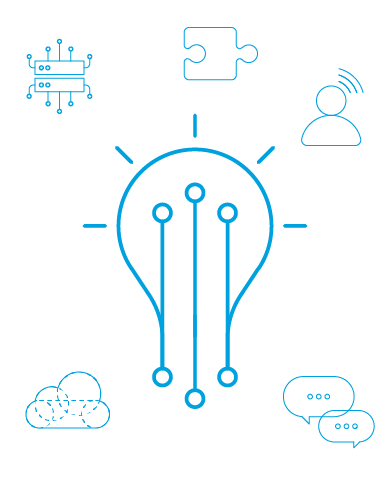Episode Summary
iland Director of Cloud Market Intelligence Brian Knudtson is joined by guests Jon Hildebrand, Tim Davis, and Shannon Kuehn for a conversation around the concerns customers have with connecting to the cloud. They discuss the importance of connectivity, especially externally, how to determine what should go to the cloud and what should remain on premises, and the best ways to alleviate connectivity concerns in the cloud. The key: Communication between technical components is important, but there’s nothing like good old fashioned communication between people.
Panel
Cloud Conversations
Topic 1
[02:09] If customers are worried about connecting to their workloads in the cloud, shouldn’t they be worried about the connectivity their external customers have to the data they keep internally?
Topic 2
[07:40] I think some of this concern comes from the ability of systems to properly communicate when separated between the cloud and on-premises. How should an IT staff determine what goes and what stays?
Topic 3
[16:39] What can customers do to alleviate the concern they have with the connectivity to and amongst the cloud?
Cloud Bites
[03:06] “Of course, connectivity is ultra important in all parts of the application, including that external access, because at the end of the day, the user experience is everything.” — Jon Hildebrand
[03:21] “Folks tend to think of the cloud as this mystical, magical wonderland and it, in part, is. But it’s still networking. And you still need to be able to connect to applications as well as you need to be able to have your external customers be able to connect to your data.” — Shannon Kuehn
[05:15] “Moving it to the cloud and not thinking about all of the intricacies of how that application functions, is going to leave you with some heartburn after it moves.” — Shannon Kuehn
[06:14] “Bringing together people at different sides of the business to try and understand what they have is also critical.” — Shannon Kuehn
[08:51] “The biggest piece of advice I can give is just do an assessment, just know what you have going on.” — Tim Davis
[11:26] “A lot of people do the assessment just to determine what is connected. I would think that you would also have to ensure you would know what your limits are, because latency is a killer.” — Jon Hildebrand
[13:40] “This is a perfect point to possibly bring in a partner or somebody who literally does these assessments or these things for a living.” — Tim Davis
[17:59] “I think if you use whatever tools make sense within your organization, you’ll get a better handle of what’s out there and what needs to be able to talk to what if you move that application into a cloud provider.” — Shannon Kuehn
[19:22] “I have noticed a trend that a lot of monitoring tools are also getting much better at being able to do this, so when you’re running all these in tandem, you’re going to be able to overcome a lot of the issues of folks who haven’t documented parts of their application.” — Jon Hildebrand
[19:47] “We all know that sometimes what’s in our heads doesn’t get put down to paper.” — Jon Hildebrand
[22:08] “The connectivity between people is just as important as the connectivity between switches.” — Tim Davis
[23:20] “We’ve gotten ourselves to this world of siloed IT, not just shadow IT. And it’s a big psychological change to all of a sudden have to break down those silos and have conversations that you may have never had before.” — Shannon Kuehn
[24:16] “That’s all we’re going to do to fix your operations is teach you how to communicate between silos.” — Tim Davis
“The connectivity between people is just as important as the connectivity between switches.”
TIM DAVIS
DEVOPS ADVOCATE, ENV0


Episode Asset
Blog: The importance of adaptability in an increasingly complex world
Adaptability, in a business sense, is the fundamental goal of any company to survive and thrive. Adaptability to changing conditions is a must-have trait for organizations, especially in today’s uncertain world.
The only problem is, while no industry or company is completely safe from disruption, many organizations are not prepared to adapt quickly enough to survive the effects of accelerating change.
Points covered in this asset, include:
- Business leaders must prioritize adaptability as a must-have organizational trait.
- As disruption accelerates, there is no guarantee that the biggest and toughest industry players will survive.
- Organizations that understand their environments and are positioned to sense change and adapt are the most likely to survive in the event of disruptions.



